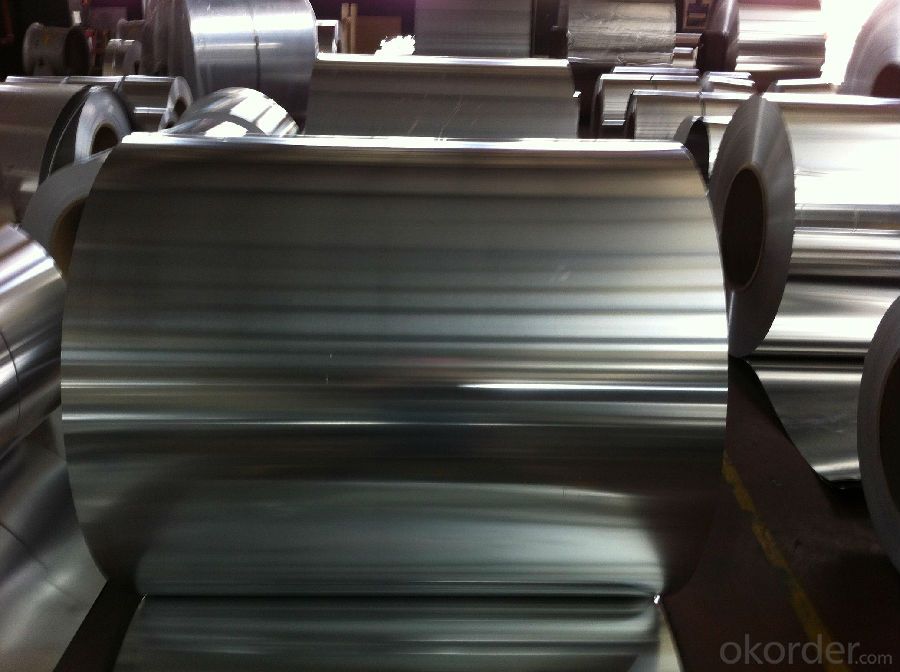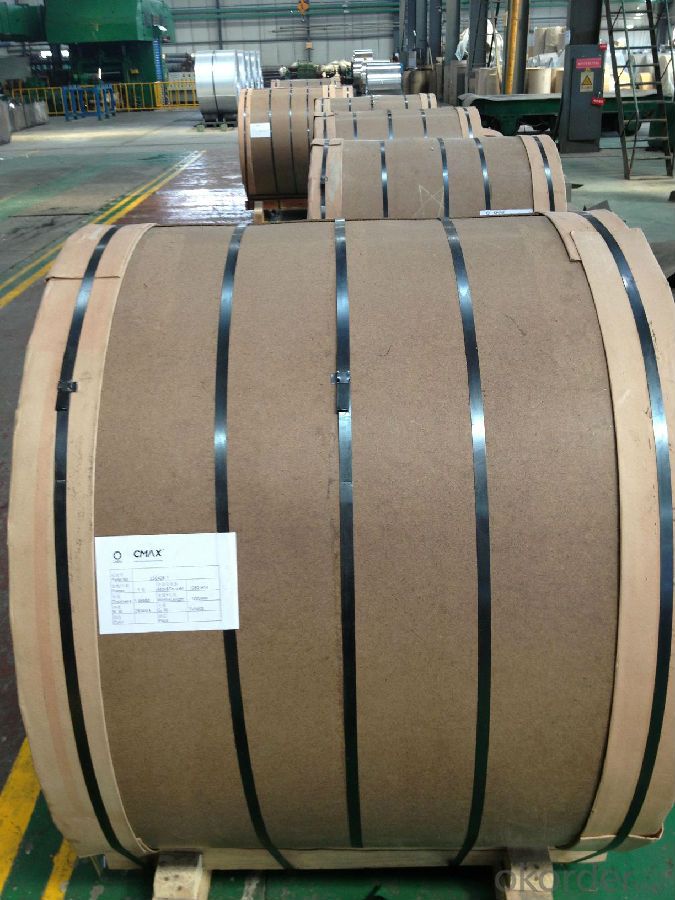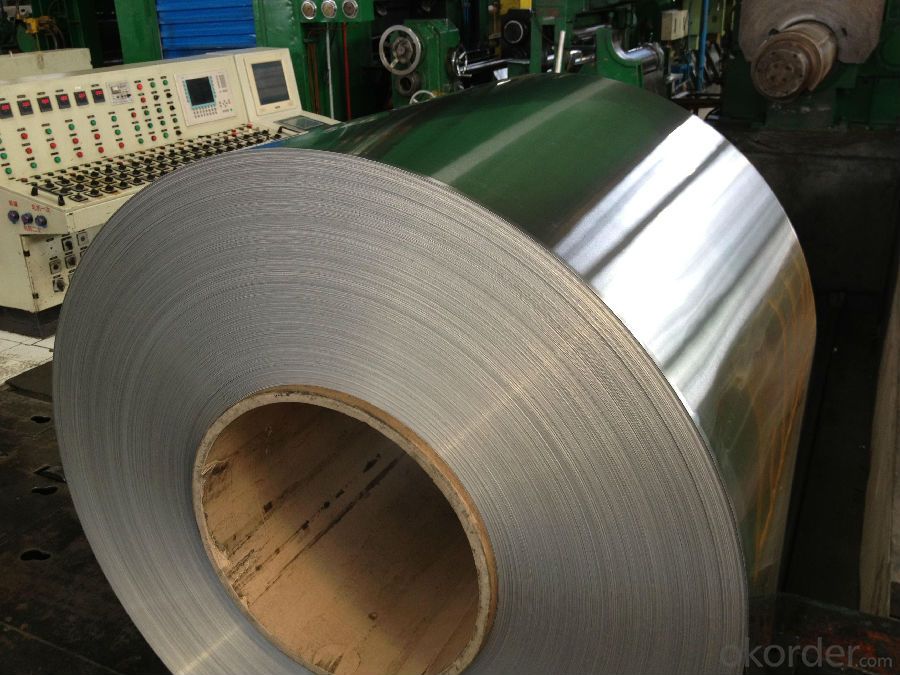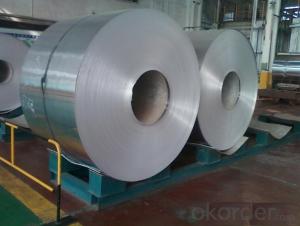Continuous Casting Aluminium Coil AA1100 HO 3mm
- Loading Port:
- Shanghai
- Payment Terms:
- TT OR LC
- Min Order Qty:
- 5 m.t.
- Supply Capability:
- 50000 m.t./month
OKorder Service Pledge
OKorder Financial Service
You Might Also Like
Item specifice
1.Structure of Product Description
Continuous Casting Aluminium Coil is one semi-finished aluminium material. The coils are widly used in the building,decoration and aluminium circle. The alloy AA1050 is the most common alloy in the aluminium industry. Its weight is much lower than steel. So many customers choosed aluminium material instead of steel.
2. Main features of the product
a.Competitive price---We have our own mills and can produce mill finished aluminium coils, so we can control the production cost better.
b.Professional after-sale service---We have more than 15 years exportation experience and you need not worry about the exporation problems.
c.Fast delivery time---We can control the delivery time within 35 days.
3. Image



4. Product Specification
| Alloy | Temper | Thickness | Width | Weight |
| AA1100 | HO | 0.2MM-3MM | 1000-1500MM | Max 3 tons |
5.FAQ:
What is the quality standard?
---Usually our standard is GB3880-2006
What is the largest width?
---It is 2300mm
What is the MOQ?
---Usually we can accept 80 tons.
- Q:Can aluminum sheets be used for lithographic printing plates?
- Yes, aluminum sheets can be used for lithographic printing plates. Lithographic printing is a method that uses the principle that oil and water do not mix. A lithographic printing plate is made of a metal base, typically aluminum, which is coated with a photosensitive layer. This layer is then exposed to light, creating a pattern that can be used for printing. Aluminum is a preferred material for lithographic printing plates due to its excellent properties. It is lightweight, yet strong and durable. It also has a smooth surface, which is crucial for achieving high-quality prints. Additionally, aluminum has good thermal conductivity, which aids in the fast drying of ink during the printing process. Furthermore, aluminum is easily processed and can be chemically treated to enhance its surface properties, such as making it more hydrophilic or hydrophobic. This allows for better control of the ink and water balance on the plate, resulting in sharper and more precise prints. In summary, aluminum sheets are commonly used for lithographic printing plates due to their desirable properties and suitability for the lithographic printing process.
- Q:Are 101 aluminum sheets suitable for architectural louvers or sunscreens?
- Yes, 101 aluminum sheets are suitable for architectural louvers or sunscreens. 101 aluminum is a commercially pure aluminum alloy that offers good corrosion resistance and excellent formability. It is commonly used in architectural applications due to its lightweight nature, ease of fabrication, and ability to withstand various weather conditions. In the case of louvers or sunscreens, 101 aluminum sheets can be easily shaped and cut into the desired form, allowing for the creation of functional and aesthetically pleasing architectural elements. Additionally, the corrosion resistance of 101 aluminum ensures that the louvers or sunscreens will remain structurally sound and visually appealing over time.
- Q:How does the formability of aluminum sheet vary with different alloys?
- The formability of aluminum sheet can vary significantly with different alloys. Some aluminum alloys have excellent formability, allowing for easy bending, shaping, and forming without cracking or tearing. These alloys are commonly used in applications that require complex shapes or intricate designs. On the other hand, certain aluminum alloys may have lower formability, making them more difficult to shape without the risk of deformation or failure. The choice of alloy will depend on the specific requirements of the application and the desired level of formability needed.
- Q:Can aluminum sheets be used for heat exchangers?
- Indeed, heat exchangers can utilize aluminum sheets. Aluminum, known for its remarkable heat conductivity, proves to be a perfect choice when it comes to heat exchangers. Its superior thermal conductivity facilitates exceptional heat transfer between fluids, leading to efficient heat exchange. Moreover, aluminum sheets possess the advantages of being lightweight, resistant to corrosion, and exhibiting commendable mechanical properties. These additional attributes further enhance their suitability for various heat exchanger applications.
- Q:Would a chemical reaction happen between a piece of copper and a liquid solution containing a compound of aluminum? Why or why not? FIRST BEST ANSWER GETS POINTS!
- Please don't ask diffuse questions. If you mean a solution of aluminum ions Al+3, then no: Al3+ + 3e? ? Al(s) -1.66 Cu2+ + 2e? ? Cu(s) +0.340 Cu+ + e? ? Cu(s) +0.520 If you mean a solution of some unspecified Al compound then maybe, but there's no way to know until you specify the compound.
- Q:What are the mechanical properties of aluminum sheets?
- Aluminum sheets possess several mechanical properties, including high strength-to-weight ratio, excellent corrosion resistance, good formability, and high thermal and electrical conductivity. They are also non-magnetic and non-toxic, making them suitable for various applications in industries such as aerospace, automotive, construction, and packaging.
- Q:What kind of paint would you like to paint on the aluminum plate?
- Paint on the aluminum plate should be painted nitrocellulose or polyester paint.Is the aluminum plate with a thickness of more than 0.2mm to 500mm, 200mm width, length less than 16m aluminum material called aluminum plate or aluminum sheet, aluminum is below 0.2mm, 200mm within the width of the row material or bar (of course, with the progress of the large equipment, the width can be 600mm row material also more). Aluminum sheet refers to the rectangular plate made of aluminium ingot rolled and divided into pure aluminum plate, alloy aluminum plate, thin aluminum plate, middle thick aluminum plate and pattern aluminum plate.Nitrocellulose lacquer is a common paint for woodwork and decoration. The main film forming material is mainly to nitrocellulose lacquer, with alkyd resin, rosin modified resin, acrylic resin, amino resin and other resin composed of hard and soft.Polyester paint, also called unsaturated polyester paint, is a kind of multi component paint, it is a kind of thick paint made of polyester resin as the main film forming material. Polyester paint film fullness, thick hard surface. Polyester paint also has varnish varieties, called polyester varnish. Polyester paint needs to be solidified during construction, and the proportion of these curing agents takes up 1/3 of the total paint. These curing agents, also known as curing agents, are mainly composed of TDI (toluene diisocyanate, /toluenediisocyanate). These free TDI will turn yellow, not only to make furniture paint yellow, but also will make the adjacent wall yellow, this is a major shortcoming of polyester paint.
- Q:How do I choose the right thickness for my aluminum sheet?
- Choosing the right thickness for your aluminum sheet depends on several factors such as the intended application, required strength, and desired weight. Thicker sheets offer increased strength and durability, making them suitable for heavy-duty applications, while thinner sheets are lighter and more flexible, ideal for applications that require flexibility or weight reduction. It is essential to consider the specific requirements of your project and consult with experts or reference material to determine the appropriate thickness that meets your needs.
- Q:i am writing an essay about aluminium recycle,,,, and i would like to knowwhy it is important to recycle aluuminium can, what is so harmful about the wastes and some facts about aluminium.Thanx..... i would love if you give me the site address where i can find such infors...
- aluminium okorder /
- Q:What is the difference between aluminium plate 5A05 and 5A06?
- The aluminum plate doesn't have this material. Have you made a mistake?Give you a full one,1, pure aluminum: Material: 1050/1060/1070/1100/ 1200/ thickness: 0.1---20mm width: 800---2200mm2, alloy aluminum: Material: 2A21/3003/5052/5083/6061/6082 /8011 thickness: 0.5---260mm width: 800---2800mm3 curtain wall Kaiping aluminum plate: Material: 1060/1100 thickness 0.95, 1.35, 1.85, 2.35, 2.7, 2.85mm, width 0.8---1.5m
1. Manufacturer Overview |
|
|---|---|
| Location | |
| Year Established | |
| Annual Output Value | |
| Main Markets | |
| Company Certifications | |
2. Manufacturer Certificates |
|
|---|---|
| a) Certification Name | |
| Range | |
| Reference | |
| Validity Period | |
3. Manufacturer Capability |
|
|---|---|
| a)Trade Capacity | |
| Nearest Port | |
| Export Percentage | |
| No.of Employees in Trade Department | |
| Language Spoken: | |
| b)Factory Information | |
| Factory Size: | |
| No. of Production Lines | |
| Contract Manufacturing | |
| Product Price Range | |
Send your message to us
Continuous Casting Aluminium Coil AA1100 HO 3mm
- Loading Port:
- Shanghai
- Payment Terms:
- TT OR LC
- Min Order Qty:
- 5 m.t.
- Supply Capability:
- 50000 m.t./month
OKorder Service Pledge
OKorder Financial Service
Similar products
New products
Hot products
Related keywords






























